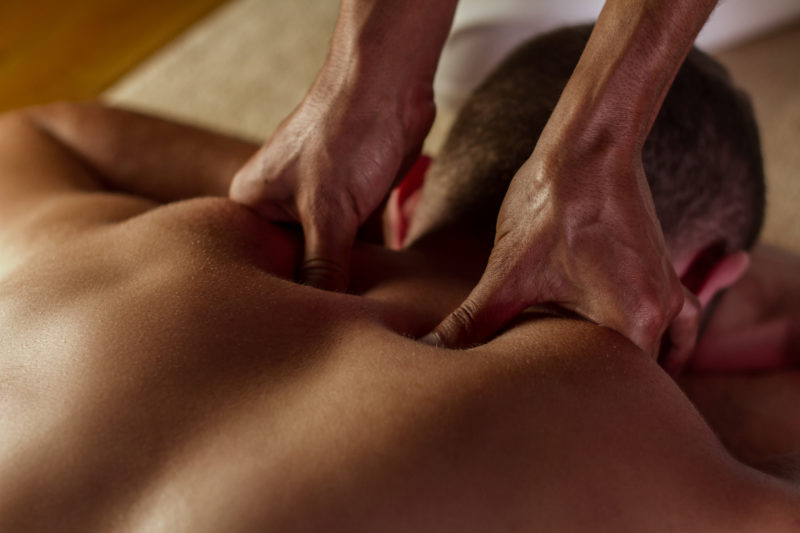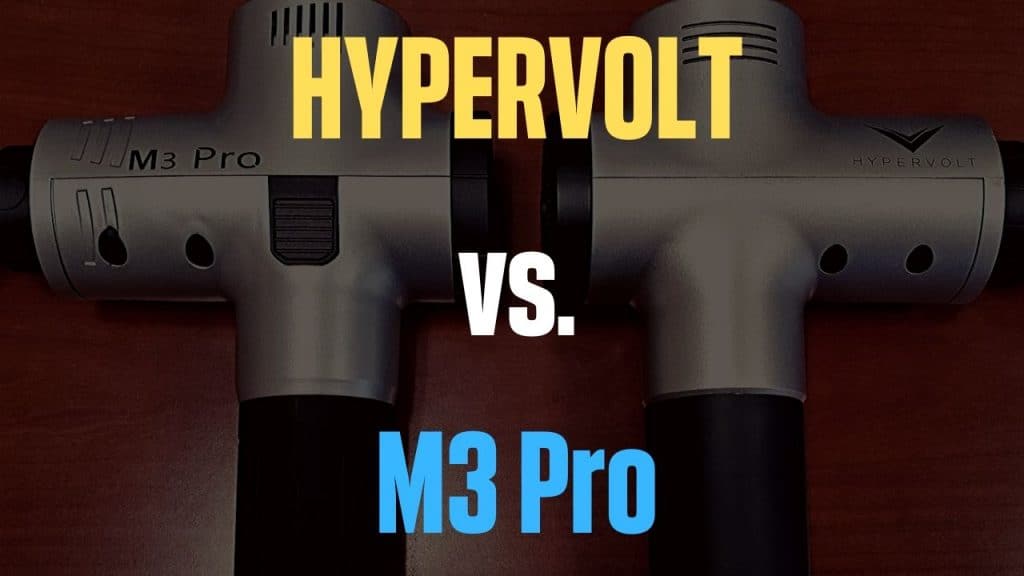You could say we’re pretty obsessed with massages around here. If you hadn’t noticed, massage guns are pretty well known for being at-home, deep-tissue-massage-therapist stand-ins. We asked the question, “What’s a deep tissue massage?” And now we’re here to share what we’ve learned.
Have you ever had a proper deep tissue massage? What about a Swedish massage? Have you ever experienced a Thai massage? We’ve had massages given all over the world, from countless massage therapists, just about every massage style (even tried acupuncture), but nothing hits the same as a deep tissue massage. What makes it so different?
What’s a Deep Tissue Massage?
A deep tissue massage uses slow, deep strokes of sustained pressure to target deep muscles and connective tissue in order to treat musculoskeletal conditions. It’s used to “break up” scar tissue, which then minimizes pain, tension and improves range of motion. It also increases blood circulation and reduces inflammation.
What Is the Difference Between a Deep Tissue Massage and a Regular Massage?
A classical massage is also called a Swedish massage. Although they do share some similarity in their goals, Swedish massage and deep tissue massage are rather different in their application.
As we’ve already discovered, deep massage involves manipulation of the muscle(s) that is meant to address injuries and chronic pain by applying firm pressure to the deeper layers of muscle. It’s often used in sports massage for athletic recovery and sports injury rehabilitation, as well as for health conditions involving chronic muscle pain.
While deep tissue technique aims for the deepest layers of the muscle and fascia, Swedish massage is much more superficial. It uses various techniques to invoke relaxation, relieve muscle tension and soreness and to reduce stress.
There are five basic techniques: effleurage, tapotement, vibration, petrissage and friction. Each technique has more specific strokes that achieve various effects. For example, cupping is a form of the tapotement technique that uses swift and repeated strikes on the back. It’s commonly used to loosen phlegm in the upper respiratory system. On the other hand, a massage involving petrissage might lift or “pick up” in order to stimulate blood flow.
While deep tissue massage therapy tends to be more clinical, it can also be relaxing and is occasionally offered in spa settings. It’s worth noting that clinical settings can often create a warm and calming atmosphere in the massage room, so if one of your goals is relaxation you shouldn’t be deterred from clinics.
Why Are Deep Tissue Massages So Painful?

Was your massage wonderful or painful? Deep tissue massage can often be described as causing a ‘good’ sort of hurt. It can be uncomfortable, but will still feel – physically – as though something good is in the works.
It’s important to make the distinction between the physical and mental understanding of what pain might be, because ‘no pain, no gain’ is not exactly how it works. In many cases, it’s very much the opposite,
If you experience pain during your massage, don’t be afraid to tell your massage therapist. They can adjust their technique. Before your massage, it’s important to do your due diligence and make sure that you’re seeing a licensed massage therapist who is practiced in deep tissue massage techniques.
It’s common to feel sore after a massage, sort of like you’ve had a good workout, and it should subside within 24-36 hours. You might experience a headache or feel sick after your massage. Feeling some pain after a deep tissue session is normal as well. This might happen because your muscles aren’t accustomed to deep treatment. It will subside.
If you are still feeling pain after a day or so, immediately contact your massage therapist immediately. Ice the area until you are given further instruction.
Some people believe drinking lots of water before and after a massage is helpful, as it hydrates the muscles and makes them pliant. In fact, being dehydrated can cause post-massage symptoms, but it’s just generally a good idea to make sure you’re staying hydrated. This will help keep your muscles functioning properly, your blood circulation healthy, and your body happy overall.
What Are the Side Effects of a Deep Tissue Massage?
We’ve discussed the common side effects related to deep tissue massage, which are sore muscles and pain following your treatment. Massage is generally considered to be a low harm, complementary form of treatment. However, more serious side effects can occur if there is an underlying health condition.
You should be asked to fill out a medical history form prior to your message, unless you’ve filled one out already recently. If there have been any changes, ask to update your history and tell your therapist directly. If you have any of the following conditions, you need to disclose them to your therapist:
- Cardiovascular condition
- Blood clotting disorder
- Increased risk of injury, such as bone fractures
- Nerve injury
- Any recent surgery or chemotherapy
- Wounds or skin conditions
- Hernia
It’s also helpful for your therapist to know of any mental health conditions, and medications you are taking.
If you have underlying medical conditions and you’re going to undergo a massage of any sort, make sure that the therapist has experience in working around this condition. If you have any concerns about your health before undergoing a deep tissue massage, you should consult a doctor first.
An additional note for those who are undergoing cancer treatment. There are myths about the safety of massage for those currently in treatment, and it is true that massage can be unsafe in some cases. However, many experts support the use of massage in treatment for its various benefits: relaxation and de-stressing, reduced muscle tension and pain.
Of course it’s always important to discuss any health concerns with your doctor and your massage therapist before your massage. With some guidance and perhaps some adjustments, enjoy the benefits of massage and a bit of self indulgence!
Bottom Line
What’s a deep tissue massage? Well, now you know! When we have sore muscles, stiff backs and tight joints, it’s common to think that we need deep tissue massage, and it is a really helpful form of massage in the right scenario.
It’s not necessarily the best option for all cases of tension and pain. Swedish massage, applied with greater pressure or not, can often achieve the results many look for.
On the other hand, if you’re an athlete or suffering from chronic pain, then you may benefit from deep tissue massage. Either way, we really believe in the powers of massage and hope that you’ll find their benefits too.


